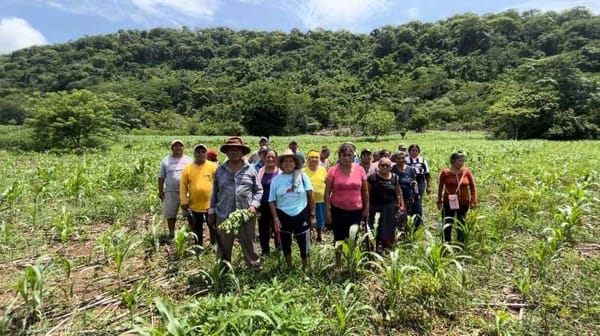Rural villages in Mexico finally see the light thanks to solar panels
Residents might consider the safety of strolling at night, the affordability of a refrigerator and TV, and other modern conveniences made possible by solar panels.

In more than 70 years, the community of Achiquico, in San Luis Potosí, central Mexico, had never seen the light in their homes, said its longest-serving resident, Don Agustín Cruz, on Sunday.
Now, with solar panels and the "Lights of Hope" program, the members of the Cruz family, with at least three generations, can think about the security of walking at night, and the opportunity to buy a refrigerator, and even a television.
Achiquico is a town in the municipality of Tamazunchale, in the Huasteca Potosina, a natural region in the center of the country, which was one of the more than 500,000 Mexican homes that are lit by candles until last February when Iberdrola Mexico and its partner Iluméxico installed autonomous photovoltaic systems that provide them with electricity 24 hours a day.
Don Cruz, an 82-year-old farmer, told Efe that he arrived in this community before he was 10 years old, but he always dreamed of the day when he could see the light inside his home and stop being part of the more than 2 million Mexicans who live without electricity in their homes.
The struggle for light
Her daughter, Francisca Cruz, 52, a representative of the Achiquico community, took the lead and decided to put aside the candles and the fear of going out to meet animals such as snakes or coyotes.
She turned to Iberdrola Mexico's "Lights of Hope" program after trying for years to bring conventional electricity to her town, which she shares with her laughing brother Antonio and their family of five.
First, he quoted the price of bringing the light through classic transmission grids and the money was not enough. So installing solar panels "changed his life radically".
"For me, it was a very nice change because we no longer had to pay to charge our cell phones, we no longer had to buy gasoline to be able to turn on a plant for light," she told Efe.
The woman, who is dedicated to weaving, details that before they used to buy gasoline in the community of six families to start a small, old and noisy power plant, and when they had no money they carried out their activities under a candle, including the children's homework.
Francisca Cruz did not rest, she followed up on her request until she got it and now she has completely lit up the entire community, which is difficult to access and is even cut off if it rains because its only entrance is flooded.
"Thanks to Iberdrola Mexico for bringing these six families (from Achiquico) this benefit. It is something they may have never dreamed of. Now the children will be able to do their homework in the afternoons, they will be able to get up and have electricity, they will even be able to watch television, they will be able to connect, they will be able to listen to the radio and many things that they could not do before," commented José Luis Meza, municipal president of Tamazunchale.
Lights of hope
To achieve this goal, Iberdrola Mexico donated an investment of 6.5 million pesos (about US$325,000) for a third phase of "Lights of Hope," which also benefited a school and a total of 15 communities in the municipalities of Tamazunchale, San Martín Chalchicuautla, Tampacán, and Xilitla.
"For me, it's better (the installation of solar panels) because it doesn't go out, there are almost no blackouts, here we use it for lighting, the blender," said Filemón Cruz, 65 years old, another beneficiary.
María Cruz, from the community of El Granado, in Xilitla, also says that before her life was "sad because we had no light, nothing" and now she feels "very good, happy, with my two daughters".
The third stage involved installing solar panels in 100 homes for the benefit of more than 560 people in San Luis Potosí, who also received workshops on environmental education and energy generation from the civil association Concentrarte.
This project, which brings electricity to rural communities without access to service, began in 2019 and seeks to enhance productive activities and the quality of life of at least 6,000 inhabitants of the Huasteca region, where 1,500 people have already benefited to date.




